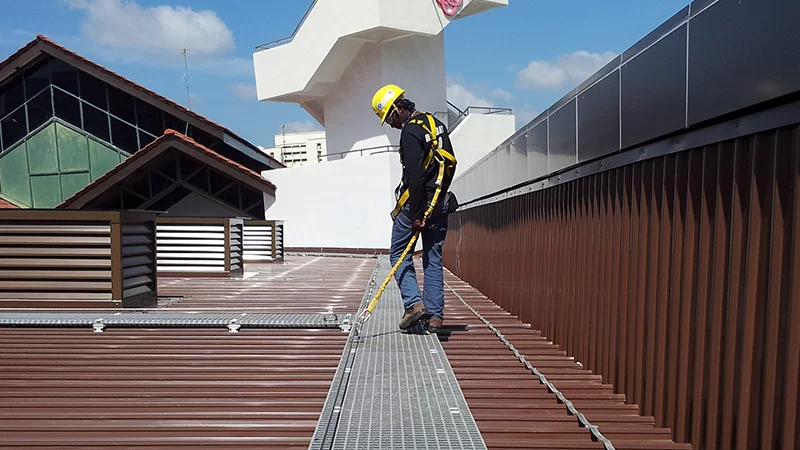When it comes to working on rooftops, safety should always be the top priority. In the Philippines, where diverse industries often require rooftop access, ensuring the safety of workers and the integrity of roofs is paramount. This blog explores the best practices for achieving rooftop safety through the installation of roof walkway systems. Let’s delve into the crucial aspects of roof walkways and why they are essential for those working at heights.
Understanding the Need for Roof Walkways:
Rooftops can be treacherous places to work without proper safety measures in place. Slippery surfaces, uneven terrain, and a lack of defined pathways can lead to accidents and damage to the roof itself. Roof walkway systems address these issues by providing a safe, stable, and slip-resistant walking and working surface.
Features and Benefits of Roof Walkways:
Preventing Surface Damage:
One of the primary benefits of roof walkways is the prevention of surface damage to the roof. The advanced design of these walkways ensures that they distribute weight evenly, reducing the risk of damage.
Portability and Ease of Setup:
These systems are portable, lightweight, and simple to set up. No complex welding is required, making them a versatile solution for various roof types.
UV Protection and Fire Retardancy:
Roof walkways often come with UV protection and fire retardancy, ensuring durability and safety in challenging environmental conditions.
Enhanced Traction:
The surface of roof walkways is designed to prevent slipping in all directions, even in wet and icy conditions, providing much-needed traction for users.
Designated Paths:
They also offer designated paths that define off-limits areas and restrict access, improving safety on the rooftop.
Material Options for Roof Walkways:
Two common material options for roof walkways are aluminum and fiberglass.
Aluminum:
- Durable and non-corrosive
- Lightweight with easy installation
- Customizable with guardrails
Fiberglass:
- Ideal for corrosive environments
- Lightweight and strong
- Fire retardant with high visibility options
Designing an Effective Roof Walkway System:
When designing a roof walkway system, several considerations come into play. Layout, anchoring, and the inclusion of guardrails should be carefully planned to ensure maximum safety and usability.
Installation and Maintenance:
Installing a roof walkway system is straightforward, and regular maintenance is essential to keep it in optimal condition. Simple upkeep ensures long-term safety and functionality.
Case Studies:
To underscore the significance of roof walkway systems, here are some real-world examples of successful installations in the Philippines. These case studies highlight the positive impact on safety and productivity.
Compliance with Local Regulations:
In the Philippines, specific safety regulations and standards govern rooftop access and safety. Staying compliant with these regulations is crucial for businesses and individuals.
Choosing the Right Roof Walkway System:
Selecting the appropriate roof walkway system depends on various factors, including roof type, industry, and budget. Seek expert advice to make the best choice for your specific needs.
Conclusion:
Raising the roof on safety in the Philippines means prioritizing the installation of roof walkway systems. These systems offer a range of benefits, from preventing surface damage to enhancing traction and safety. By following best practices and staying compliant with local regulations, you can ensure a safer working environment on rooftops.











